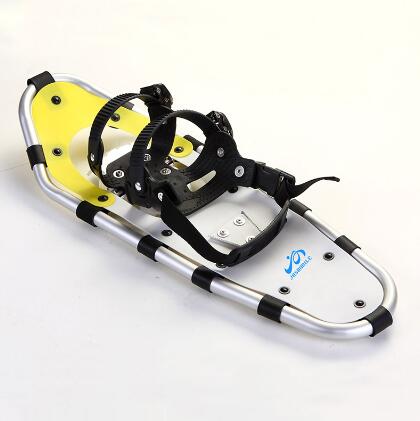Floating on Snow: The Influence of Aluminum Alloy Construction on Snowshoe Flotation and Tips for Varied Snow Conditions
2023-12-27
Introduction:
Snowshoeing, a serene and exhilarating winter pursuit, relies heavily on the design and construction of snowshoes. Central to their performance is the choice of materials, with aluminum alloy being a popular selection. In this blog, we explore how the aluminum alloy construction impacts snowshoes' flotation on deep snow and offer considerations for users navigating varying snow conditions.
1. The Role of Flotation in Snowshoeing:
- Flotation is a critical aspect of snowshoe performance, especially in deep snow. It refers to the snowshoe's ability to stay on the surface rather than sinking, distributing the user's weight and preventing them from plunging into the snow.
2. 6061 and 7075 Aluminum Alloys:
- Common aluminum alloys used in snowshoe construction include 6061 and 7075. The choice between these alloys significantly influences flotation. 6061 is lighter and more malleable, offering a degree of flexibility that aids in conforming to the snow. In contrast, 7075 provides higher strength and rigidity, which contributes to a more solid platform.
3. Optimizing Flotation with Frame Design:
- The design of the snowshoe frame plays a crucial role in optimizing flotation. Engineers strategically shape the frames to distribute weight and create a surface area that prevents sinking. The curvature of the frame, known as the rocker profile, influences how the snowshoe interacts with the snow, affecting both flexibility and flotation.
4. Surface Area and Weight Distribution:
- The wider the surface area of the snowshoe, the better its flotation. Aluminum alloy frames are designed to balance the need for sufficient surface area with considerations for weight distribution. This equilibrium ensures that users experience enhanced flotation without compromising on maneuverability.
5. Powder Baskets and Flotation Tails:
- Powder baskets and flotation tails are accessories that can be added to snowshoes to further optimize flotation. Powder baskets, attached to the tips of the snowshoe, increase the surface area, while flotation tails extend the length, providing additional lift in deep snow. These additions are particularly useful for users venturing into powder-heavy terrains.
6. Considerations for Varying Snow Conditions:
- Powder Snow: In deep powder, prioritize snowshoes with wider frames, powder baskets, and flotation tails for maximum flotation. Consider using snowshoes with a rocker profile that aids in staying on top of the powder.
- Packed Snow and Trails: For packed or groomed trails, a more streamlined snowshoe design with a narrower frame may be suitable. Look for a balance between flotation and agility.
- Icy Conditions: In icy conditions, consider snowshoes with aggressive crampons and a durable aluminum frame. The rigidity of 7075 alloy can provide stability on icy surfaces.
Conclusion:
The choice of aluminum alloy in snowshoe construction significantly influences flotation, impacting the overall experience of winter enthusiasts. Whether navigating deep powder, packed trails, or icy surfaces, users should consider the specific characteristics of the aluminum alloy, frame design, and additional accessories to ensure their snowshoes provide optimal flotation for diverse snow conditions. With the right knowledge and equipment, every winter adventure becomes a delightful journey, floating effortlessly on the snowy canvas.



